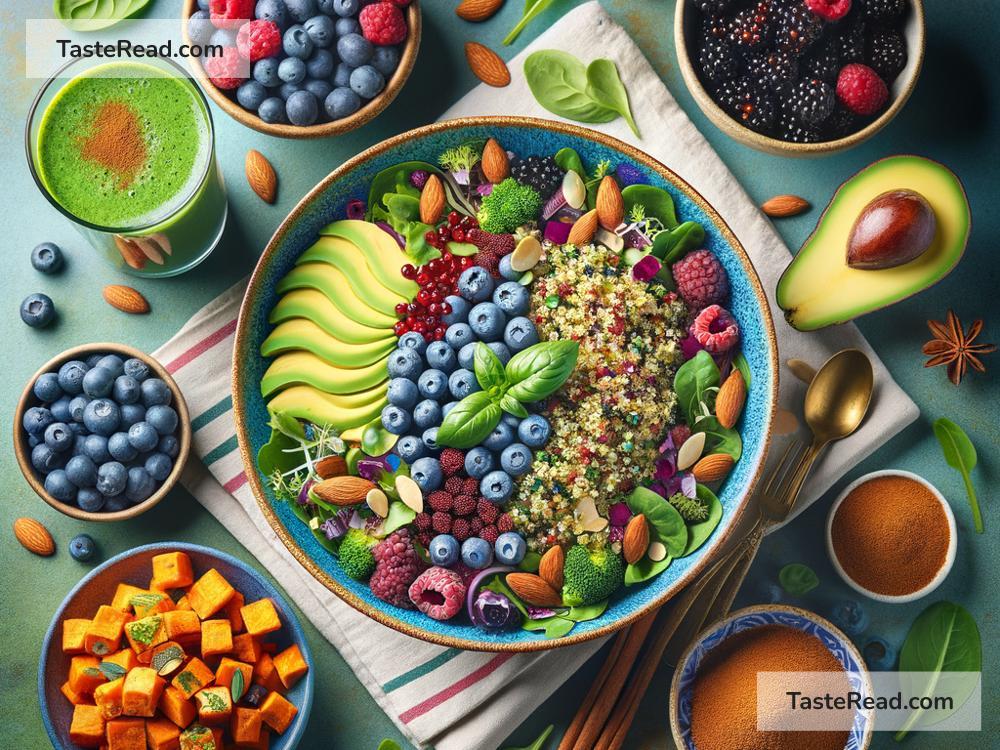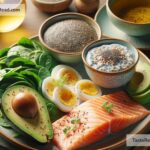10 Foods to Help Reduce Insulin Resistance
If you’re looking to manage your blood sugar levels and improve insulin resistance, the good news is that your diet can play a big role. Insulin resistance happens when your body’s cells don’t respond well to the hormone insulin, which helps move sugar (glucose) from your blood into your cells for energy. If untreated, insulin resistance can lead to type 2 diabetes or other health problems.
The good news is that some foods can help improve insulin sensitivity naturally. Here’s a simple guide to 10 foods that may help reduce insulin resistance.
1. Oats and Whole Grains
Whole grains like oats, quinoa, brown rice, and whole-grain bread are packed with fiber. Fiber slows down the digestion process and prevents sudden spikes in your blood sugar levels. The steady release of sugar into your bloodstream can help your body use insulin more efficiently.
Look for whole grains that are minimally processed, such as steel-cut oats or whole quinoa, to get the most benefit. Avoid white bread and refined carbs, as they can worsen insulin resistance.
2. Leafy Greens
Spinach, kale, broccoli, and other leafy greens are excellent for reducing insulin resistance. They are low in calories and carbs but rich in vitamins, minerals, and antioxidants like magnesium, which play a role in improving insulin sensitivity.
Try adding a handful of greens to your meals, such as a spinach salad, kale smoothie, or sautéed broccoli with dinner.
3. Fatty Fish
Fatty fish like salmon, mackerel, sardines, and trout are high in omega-3 fatty acids, which are great for reducing inflammation in the body. Chronic inflammation is often linked to insulin resistance.
By adding fatty fish to your diet a couple of times a week, you can not only improve your blood sugar levels but also boost heart health. If you’re not a fan of fish, flaxseeds and walnuts are vegetarian sources of omega-3 fatty acids.
4. Nuts and Seeds
Nuts like almonds, walnuts, and pistachios, as well as seeds like chia seeds and flaxseeds, are rich in healthy fats, protein, fiber, and magnesium—all nutrients that support better insulin sensitivity.
Remember to eat them in moderation since they are calorie-dense. A small handful of nuts or a spoonful of seeds makes a great snack or addition to smoothies and salads.
5. Avocado
Avocado is packed with healthy monounsaturated fats, which can improve your body’s insulin response. It’s also low in carbs, making it a diabetes-friendly food.
Whether you spread avocado on toast, add it to a salad, or blend it into a smoothie, it’s a nutritious way to support your metabolism and insulin health.
6. Cinnamon
Cinnamon is more than just a spice—it has been shown to help lower blood sugar levels and improve insulin sensitivity. This popular ingredient is a simple addition to oatmeal, coffee, smoothies, or baked goods.
Even a little sprinkle a day can make a difference, but be sure to use pure cinnamon (Ceylon cinnamon) for the best results.
7. Apple Cider Vinegar
Apple cider vinegar has been studied for its ability to improve insulin sensitivity and reduce blood sugar spikes after meals. By adding a tablespoon or two to a glass of water or using it as a salad dressing, you can harness its benefits.
If you’re new to apple cider vinegar, start small and always dilute it before drinking to protect your teeth and stomach lining.
8. Berries
Blueberries, strawberries, raspberries, and blackberries are not only delicious but also packed with antioxidants like anthocyanins. These compounds help fight inflammation and improve insulin sensitivity.
Berries are a lower-carb fruit option and make a fantastic snack, dessert, or topping for oatmeal or yogurt.
9. Beans and Lentils
Beans, chickpeas, black beans, and lentils are full of fiber, plant-based protein, and slow-digesting carbs. These nutrients help keep blood sugar stable and improve insulin response.
Beans and lentils are versatile additions to soups, stews, salads, and rice dishes. Plus, they keep you full for hours, which can prevent overeating—a common challenge for those managing blood sugar.
10. Dark Chocolate
Believe it or not, dark chocolate (with at least 70% cocoa) can help reduce insulin resistance. It contains flavonoids, which are plant compounds that improve blood flow and insulin sensitivity.
Enjoy dark chocolate sparingly, as it can still be high in calories. A small piece can satisfy your sweet tooth and help you support your health goals.
Important Tips
While adding these foods to your diet can support your health, lifestyle changes like regular exercise, stress management, and getting enough sleep are equally important in reducing insulin resistance. Avoid sugary drinks, processed foods, and refined carbohydrates, as they tend to worsen insulin resistance. Focus on whole, nutrient-dense foods instead.
And don’t forget—everyone’s body is different. Always speak with your doctor or a registered dietitian before making major changes to your diet, especially if you have health conditions like diabetes.
By incorporating these 10 healthy foods into your meals and snacks, you’ll be taking steps toward improving insulin sensitivity and reducing your risk of diabetes. Eating well doesn’t have to be complicated—choose simple, whole foods and enjoy the benefits of feeling better and healthier!


